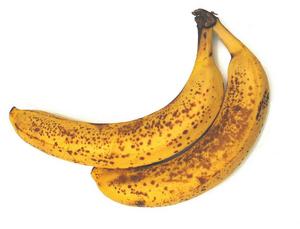With the temperatures rising, everyone needs something cool and refreshing to cool them down, right? Ice cream is good, but it is quite fattening and full of calories. You could get one of the fat-free ice creams, or a sherbet, maybe an ice milk–even frozen yogurt. Any of those can make a tasty dessert.
What if , though, you are wanting to eat something that is more nutritious? Yes, dairy products do provide calcium and vitamin D, and choosing the frozen yogurt or the ice milk or sherbet over the ice cream will save you a lot of calories and fat. But is there another frosty snack that you could select for a better nutritional punch?
Absolutely! A smoothie is a chilled treat that offers a great deal of nourishment. Exactly how much and what types of nourishment is packed into a smoothie depends upon how it is made, but the opportunities are there to incorporate dairy, fruits, protein, and even whole grains.
Now you may be thinking that you don’t have time to drive out to the nearest smoothie shop every time you want a refreshing treat–it is much simpler to just have a carton of ice cream in the freezer. Well, let me tell you–in the time it takes you to fix yourself a bowl of ice cream, you can fix yourself a fresh, homemade smoothie! Yes, you can make your own–and what’s more, you don’t even need to follow a recipe!
Even if you are hopeless in the kitchen, even if you can barely boil water, you can make a smoothie–that’s how simple it is. I have a basic plan that I follow every time I make one, and I’m going to share it with you. It is much easier than searching out a recipe online or in a cookbook. Here’s what you need:
–blender
–rubber scraper or wooden spoon
–glass for the smoothie
Those are all the utensils you need. Now for the ingredients. These can vary depending upon what you have in your kitchen and what you have a taste for, but like I said–I have a plan I follow every time. Here it is, step by step:
—Step 1: Pour about a half cup (eyeball it, don’t measure) of milk, vanilla soy milk, or fruit juice into the blender.
—Step 2: Add a large handful of frozen raspberries, strawberries, blueberries, blackberries, peaches, cherries, a mashed frozen banana, or other frozen fruit.
—Step 3: Add about a tablespoon (again, eyeball it ) of sugar, Splenda, or honey.
—Step 4: Add one or more of the optional add-ins (listed below).
—Step 5: Blend until smooth and creamy. You may need to use your rubber scraper or wooden spoon to move the fruit around at the bottom to get it blended well.
—Step 6: Taste the smoothie–you may need to add more sweetener if the fruit isn’t sweet enough. Or, you may have to add more fruit if the smoothie isn’t as thick as you would like.
—Step 7: Pour into a glass and enjoy!
Optional add-ins:
–Ground flaxseed or wheat germ (about 1 tablespoon–eyeball it)
–Yogurt (plain, vanilla, or flavored; about a quarter of a cup or one small container)
–Ground nuts (hazelnuts, almonds, walnuts, etc.–grind them up fine in your food processor or grinder first)
–Instant oatmeal (1 packet, any flavor)
–Smooth peanut butter (about 1 tablespoon–eyeball it)
You can really play around with this, making a lot of different flavor combinations. For example, use both strawberries and a frozen banana for a strawberry-banana smoothie. Or blend banana with some peanut butter and wheat germ–if you enjoy the taste of peanut butter-and-banana sandwiches, you will like this smoothie. Yogurt adds a tangy flavor that some people really enjoy, and nuts or oatmeal make for a heartier smoothie.
As you can see from the ingredients, these smoothies are packed with nutrition. There is the fruit, of course–who doesn’t need to try to incorporate more servings of fruit into their diet? Many of the ingredients offer protein–milk, soy milk, peanut butter, and nuts. Ground flaxseed has Omega-3 fatty acids. Wheat germ contains several different vitamins, including niacin, thiamin, riboflavin, Vitamin E, iron, zinc, and more. Yogurt, another protein, is also a good source of vitamins B2, B5, and B12, as well as live bacteria cultures that enhance the immune system. So, depending upon what you put in your smoothie, it can be quite a nutritional powerhouse!
For these smoothies to be cool and refreshing, it is essential to use frozen fruit. You can buy bags of frozen fruit at most stores, or you can freeze your own. Freezing your own isn’t difficult–berries are really easy because you don’t even need to wash them first. Simply lay them out on a baking sheet, put it in the freezer until they are solid, then bag them up. Be sure to wash the berries before using them. Bananas are completely effortless–just put them in the freezer the way they are, in their skins. Be aware that the skins will turn dark brown or black, but the banana inside is just fine.
Making smoothies using my step-by-step plan if very forgiving, too–you can always add more fruit, or more sweetener, or more liquid. Unlike traditional recipes that give rigid measurements for what you need to use, my plan allows you to tailor the smoothies to your liking. And, once you have made a few smoothies, it will become like second nature to you–you will be able to whip one up lickety-split.
I hope you will give these home-made smoothies a try the next time you have a craving for a frosty sweet!



